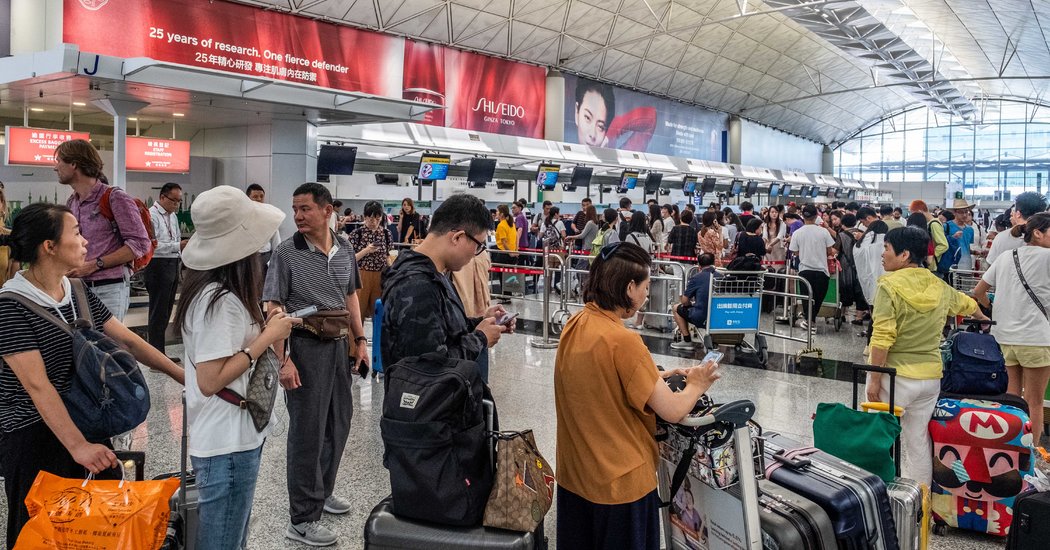HONG KONG — Antigovernment protesters on Friday swarmed Hong Kong’s international airport, taking aim at both a global transit hub and the city’s closely guarded reputation for order and efficiency.
The protest in the airport’s arrival hall, which is planned to last through Sunday, comes as Hong Kong reels from its worst political crisis since Britain handed the former colony back to China in 1997, and less than a week after protests and a general strike caused chaos in the city and led to 148 arrests.
In recent days, mainland Chinese officials have issued stern warnings to protesters about the risks of continuing their broad campaign for political reforms. The movement began in opposition to a bill that would have allowed extraditions to the mainland — where the courts are controlled by the ruling Communist Party — but has since expanded to include a number of other demands for greater democracy.
[What’s going on in Hong Kong? Here’s how the protests have evolved.]
The protests in recent weeks have often ended with the Hong Kong police firing tear gas and rubber bullets in clashes with protesters. A hard-core contingent of young protesters has increasingly embraced violent street tactics, arguing that the government has ignored more peaceful displays.
Ahead of the airport demonstration, several protesters, including employees of Hong Kong’s flagship carrier, Cathay Pacific Airways, stressed that it was meant to be an entirely nonviolent way of maintaining the movement’s momentum.
“The airport is a symbol of what Hong Kong means on the international stage, and where visitors come into our city,” said Laurie Wen, a writer and documentary filmmaker in Hong Kong. “Our international image is important to us, and we have to keep up the international attention.”
The government has already suspended the contentious extradition bill that set off the unrest in early June, but protesters are demanding a complete withdrawal of it, along with an independent inquiry into what they call police misconduct and the resignation of the territory’s embattled chief executive, Carrie Lam.
The stakes are high this weekend partly because the protesters have not applied for permission to hold the airport demonstration, as they have for other protests in recent weeks. That technically makes it an illegal assembly.
Hong Kong’s Airport Authority said on Thursday that it was aware of plans for a “public assembly” the next day. It also said, without elaborating, that it “understands that there is no application so far for these activities” and “has contingency measures to ensure smooth airport operations.”
Later on Thursday, the authority posted a notice on its website saying that the airport would operate normally on Friday, although it advised passengers to check their flight status before traveling there and to allow “sufficient time” for the journey.
The Hong Kong police said in a separate statement that while they could not comment on operational details in handling the protests, they planned to “monitor the latest developments, then make appropriate arrangement and deployment plans.”
On Wednesday, the United States joined several other countries — including Australia, Britain, Ireland, Japan and Singapore — in issuing a warning to its citizens about traveling to Hong Kong. It advised them to “exercise increased caution” because of recent “confrontational” protests.
The local government said on Thursday that while visitors might have been inconvenienced by the recent protests, Hong Kong remained “a welcoming city for tourists and travelers from around the world.”
Protesters held a more limited version of this weekend’s protest at the airport last month, in which hundreds of people chanted and held signs in the arrival hall.

